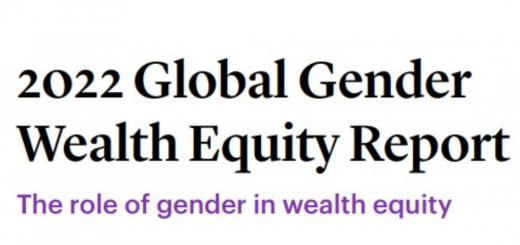Understanding the Dynamics of Workplace Violence

November 25 marked the International Day for the Elimination of Violence against Women and it kickstarts the 16 Days of Activism against Gender-Based Violence (GBV) that ends on December 10, Human Rights Day. The UN Declaration on the Elimination of Violence Against Women in 1993 defines violence against women as: ‘any act of gender-based violence that results in, or is likely to result in, physical, sexual or psychological harm or suffering to women’.
Gender-based violence or GBV is a global phenomenon with one in three women having been subjected to physical and/or sexual violence or both according to UN Women. The most significant contribution of the UN Declaration on the Elimination of Violence Against Women has been widespread recognition that violence against women is a public health and public policy issue, rather than a private matter that has become normalised in far too many societies around the world.
Workplace gender-based violence is a crucial component of GBV which widely goes unnoticed or unreported. According to the International Labour Organisation (ILO), more than one in five people, approximately 23%, experience harassment or violence at work. Women are disproportionately affected by workplace GBV which includes sexual coercion, emotional abuse, and psychological forms of violence.
INSTANCES OF GBV @ Workplace :
Recently wrestlers staged a month-long protest demanding action in sexual harassment allegations against the then WFI President Brij Bhushan Singh. The protest by wrestlers put a spotlight on workplace violence on gendered lines and the difficulty women face in getting justice. It was only after the protest at Jantar Mantar that a case was registered against Singh.
Another infamous case involves Tehelka Magazine Editor, Mr. Tarun Tejpal, who faced accusations of sexually harassing his colleague in an elevator of a five-star hotel. He was arrested on November 30, 2013, by the Goa Crime Branch and was granted bail on July 1, 2014, by the Supreme Court. The case highlighted how easy it can be for people in power to get away with sexual harassment.
In February 2015, The former Director General of The Energy and Resources Institute (TERI), RK Pachauri, faced accusations of sexual harassment from multiple female employees, leading to the conclusion of his three-decade long career at the helm of the climate think-tank. Despite Pachauri claiming his computer and phone were hacked, TERI’s Internal Complaints Committee (ICC) found him guilty of harassment.
The #MeToo movement also brought to light many women’s experiences, yet societal acceptance and action have been limited. Unfortunately, women are frequently blamed, shamed, and asked for evidence, even though many forms of workplace violence, aside from physical violence, are not easily visible to others. In India, crimes against women recorded a 87% increase between 2011 and 2021 as per the data collected by National Crime Records Bureau (NCRB). According to National Family Health Survey-5 (NFHS), only 14% women who have experienced physical or sexual violence seek help to put an end to it.
Violence on gendered lines manifests itself in many forms. Microaggressions, often subtle and unintentional, are indirect expressions of bias that contribute to a hostile work environment, particularly concerning gender-based violence (GBV). Unconscious biases, rooted in societal norms, shape perceptions and actions, perpetuating stereotypes that may lead to discriminatory practices. These biases can manifest in subtle, everyday interactions, contributing to an environment where GBV may go unaddressed.
While workplace violence is rooted in various factors, power dynamics between the perpetrator and the survivor is a key component. The perpetrator often exploits their position of authority to subject the survivor to harassment, employing various tactics. Violence, in particular, becomes a tool for the perpetrator to exert dominance over the survivor.
In some instances, fabricated consent becomes part of this manipulation, where the perpetrator, wielding their power, coerces the survivor into compliance. Here is an example :
Ashish is a CEO in an organization where Hetal works as a junior associate. Hetal is hardworking and passionate about her career. Ashish calls Hetal one day to his cabin and asks her if she wants a promotion to which Hetal says yes. Ashish then tells Hetal that it is possible only if she gives in to his sexual demands and if she refuses, she would not only not get the promotion but also lose her existing job if she tells this to anyone. Hetal is left with no option but to say yes to the idea. Hetal gets the promotion. .
LEGAL FRAMEWORK & REDRESSAL : Is POSH enough?
The Prevention of Sexual Harassment (POSH) Act is a landmark legislation in India designed to address and prevent sexual harassment at the workplace. The landmark judgement by the Supreme Court in the 1992 sexual assault of a social worker in Rajasthan led to the genesis of Visakha Guidelines. These guidelines were later given a statutory status called the POSH Act. The Act mandates the establishment of Internal Complaints Committees (ICCs) in organizations and outlines procedures for addressing complaints. To delve into the details of the POSH Act, you can explore the law here.
Workplace harassment, extending beyond the confines of the Prevention of Sexual Harassment (POSH) Act, is a complex issue deeply intertwined with patriarchy and misogyny. The other forms of violence apart from sexual harassment are not covered under the POSH Act which makes grievance redressal difficult for women. Further, it does not extend its coverage to the informal sector, like construction workers, domestic helps etc., where employment is influenced by factors like caste, class, and gender.
It is imperative for both- organizations and individuals within them to cultivate values of empathy, kindness, and compassion. Creating a workplace culture that prioritizes these values contributes significantly to dismantling the deeply ingrained structures that perpetuate harassment. Gender sensitisation in organisations to create inclusive and equitable workplaces is the next step forward. Establishing a community of support becomes instrumental in aiding survivors through the emotional aftermath and mitigating the potential long-term impacts on their professional and personal lives.
Strategies to Overcome Violence at the Workplace:
It is imperative for both- organizations and individuals within them to cultivate values of empathy, kindness, and compassion. Creating a workplace culture that prioritizes these values contributes significantly to dismantling the deeply ingrained structures that perpetuate harassment.
Organizations hold the key to fostering a safe and respectful environment. Here are key strategies aimed at preventing workplace violence:
- Implementation of Stringent Policies:
- Advocate for and enforce clear, comprehensive anti-harassment policies within the organization.
- Ensure that these policies are communicated effectively to all employees.
- HOW : The organization introduces a comprehensive anti-harassment policy, clearly outlining unacceptable behaviors and consequences. This policy is accessible to all employees through the company’s intranet and is part of the onboarding process for new hires.
- Promoting a Culture of Reporting:
- Establish confidential reporting mechanisms to encourage survivors of violence to come forward without fear of shame, guilt or any negative consequence.
- Conduct regular awareness sessions to educate employees on reporting procedures.
- HOW : An anonymous reporting platform is set up, allowing survivors to share their experiences without fear of retaliation. Regular awareness sessions are conducted where employees are educated about the reporting mechanisms, emphasizing the confidentiality and non-punitive nature of the process.
- Training and Sensitization:
- Provide mandatory training sessions on gender sensitivity, respectful workplace behavior, and the consequences of harassment.
- Foster a culture that promotes empathy and respect for diverse perspectives.
- HOW : The organization conducts mandatory training sessions on gender sensitivity, respectful workplace behavior, and the consequences of harassment. These sessions involve real-world scenarios, encouraging employees to actively engage in discussions and understand the impact of their actions.
- Integrate Inclusive Language Practices:
- Promote the use of inclusive language in all organizational communications, policies, and documents.
- Address stereotypes and biases in language that may contribute to a hostile work environment.
- HOW : The company revises its communication guidelines, promoting the use of gender-inclusive language in all official documents, emails, and announcements. It actively addresses and eliminates any stereotypes or biases present in its written and verbal communication.
Foster Open Communication Channels:
- Create platforms for open discussions on workplace culture, ethics, and behavior.
- Encourage feedback mechanisms to understand employee concerns and perceptions.
- HOW : The organization hosts regular town hall meetings where employees can openly discuss workplace culture, share experiences, and raise concerns. This platform encourages transparency and inclusivity in addressing various aspects of the workplace environment.
Leadership Commitment:
- Demonstrate leadership commitment to a safe workplace by actively supporting and participating in initiatives against harassment.
- Leaders leading by example and encouraging transparency.
- Hold leadership accountable for fostering a culture of inclusivity.
- HOW : In the annual performance review process, leaders are evaluated on their efforts to promote inclusivity and address harassment issues. This accountability ensures that leaders actively contribute to fostering a culture of respect and safety. Additionally, leaders openly communicate about the organization’s commitment to a safe and inclusive workplace. They make everyone a part of the decision making process and motivate everyone to share their opinions.
Here are some toolkits that organizations can refer to if they want to embark or evolve their gender inclusion and sensitisation priorities :
- Gender Toolkit – Integrating Gender in Programming – UNICEF
- Gender Training Toolkit – World Vision
- GENOVATE-gender-and-diversity-toolkit
WHAT EMPLOYEES CAN DO :
Employees play a crucial role in fostering a safe and respectful workplace environment. To contribute to the prevention of workplace harassment, employees can do the following :
- Awareness and Education:
- Stay informed about anti-harassment policies and reporting procedures.
- Participate in training sessions on gender sensitivity and respectful behavior.
- Active Reporting:
- Utilize confidential reporting mechanisms if you witness or experience harassment.
- Be proactive in reporting concerns and incidents promptly.
- Supportive Culture:
- Encourage open communication with colleagues to address concerns.
- Foster a culture of empathy and respect within your team.
- Advocacy for Inclusivity:
- Use inclusive language and challenge stereotypes in your daily interactions.
- Support initiatives that promote inclusivity and diversity in the workplace.
- Collective Responsibility:
- Understand that preventing harassment is a shared responsibility.
- Actively contribute to creating a workplace free from gender-based violence.
Women who are at the receiving end of violence at the workplace have major and everlasting effects on them that are beyond just the specific incident/s. There is a severe emotional toll which includes anxiety and stress and a compromised sense of personal safety. Beyond the emotional impact, survivors can face professional consequences as well which includes losing their job, not finding another opportunity, having a stagnant career graph, facing rejection and alienation from co-workers, and decreased job satisfaction. Furthermore, the fear of retaliation or social stigma may prevent women from reporting incidents promptly, aggravating the negative consequences. Additionally, the erosion of trust in the workplace environment can ruin professional relationships and collaboration, creating a sense of isolation


